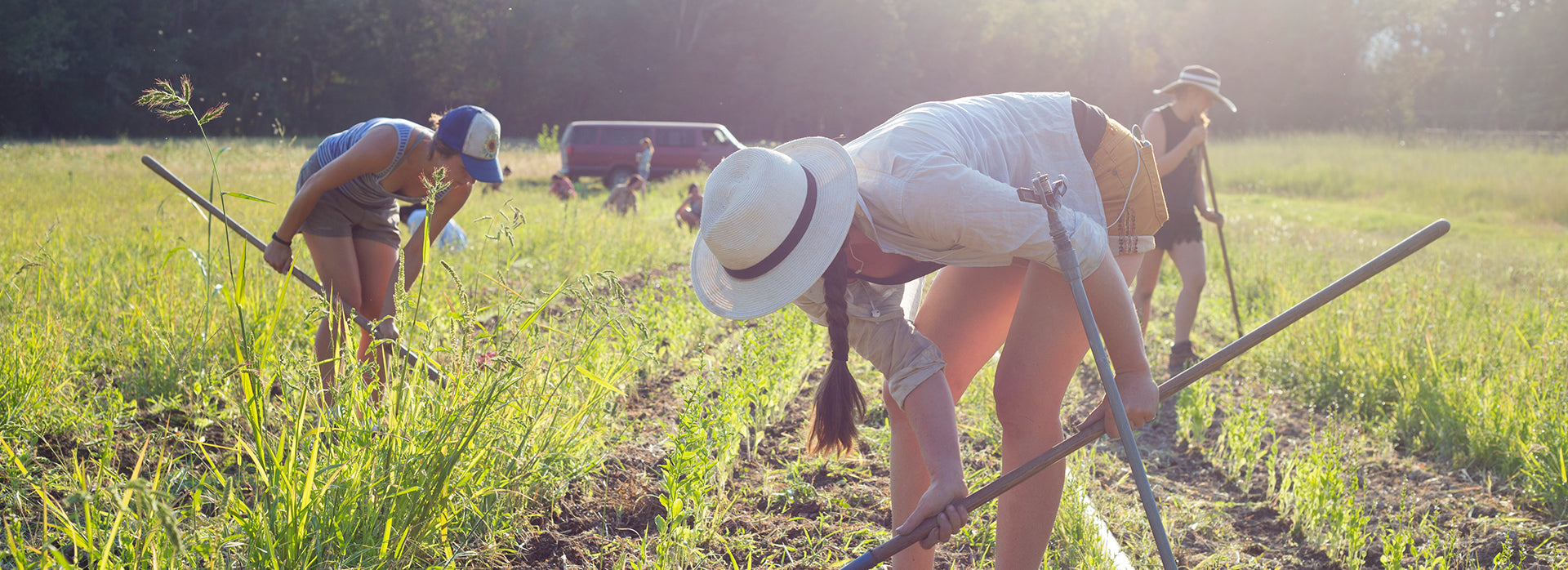You are about to leave the Herb Pharm website. The website will open in a new browser window.
Please select "OK" to continue to the website, or close this box to return to Herb-Pharm.com.

Plants & Farm StoriesFeb 2, 2022
As you may have read, in 2018 we were selected to join the Regenerative Organic Certification pilot program. As of 2020, we’re the world’s first herbal company to achieve Regenerative Organic Certification (silver level). This holistic agriculture certification has robust requirements for soil health and land management, and encompasses fairness for farmers and workers. The way we farm our land is not a “cause” for us. It’s not a trend or a way to put more logos and letters alongside our brand’s name.
Regenerative agriculture is part of our ethos, now and since 1979. We do our best to give back to the Earth and take only what we need. As stewards, we protect and preserve our own community and those we work with. And we do our part to leave things better than we found them.
Using compost has reduced our commercial organic fertilizer use by 93% since 2017. When we compost, we create a closed loop — what’s left of our herbs goes right back into the soil to feed and nourish future generations of plants. When you spend time with your hands in the dirt, you’re reminded: What you put in, you get back.
To us, that reinforces not only growing practices but how we can each feed ourselves, too. Whether it’s food, social media content or energy, what you put in, you get back. Go with good whenever you can.
Cover crops reduce erosion of soil, prevent loss of beneficial microbes and recycle or boost nutrients. This practice also replenishes our fields and lets them rest. While this might seem like a bad move for business — shouldn’t we try to plant in every square inch we can? — it’s better for the big picture and the long haul.
You can apply the same principles to your life. Don’t fill every minute of every day. Leave time to rest and replenish. Let your fields go fallow sometimes, and find spaces where you might need extra nourishment from a “cover crop.”
Beyond our ROC work, we’ve also teamed up with the Oregon Bee Project. Landscaper and Master Gardener Sayaka Lean oversees our Botanical Education Garden, aka “insect heaven.” Both the diversity of plants and the sustainable, regenerative practices we use are to thank for that. She spotted over 20 types of bees in a single year, and we’re hoping to identify even more.
When you’re as connected to the land as we are here, you start to understand the value of every single creature — especially pollinators. They rely on us to provide ample, safe habitats, and we rely on them for the health of our crops, both for food and herbal products.
In your own daily life, pause to notice the little things in nature. Even in the biggest cities, nature is present. Observe nature in action, and you’ll quickly learn how your own choices have a ripple effect.
This Earth Day is certainly an unusual one for all of us. No matter what’s happening where you call home, let’s pause and give thanks for the place we all call home. Connect with us on Instagram or Facebook and tell us: How are you honoring the Earth today, and all year long?
Don't forget! Check your Rewards account for coupons.
CHECKOUTYou are about to leave the Herb Pharm website. The American Association of Naturopathic Physicians website will open in a new browser window.
Please select "OK" to continue to the American Association of Naturopathic Physicians website, or close this box to return to Herb-Pharm.com.
You are about to leave the Herb Pharm website. The website will open in a new browser window.
Please select "OK" to continue to the website, or close this box to return to Herb-Pharm.com.